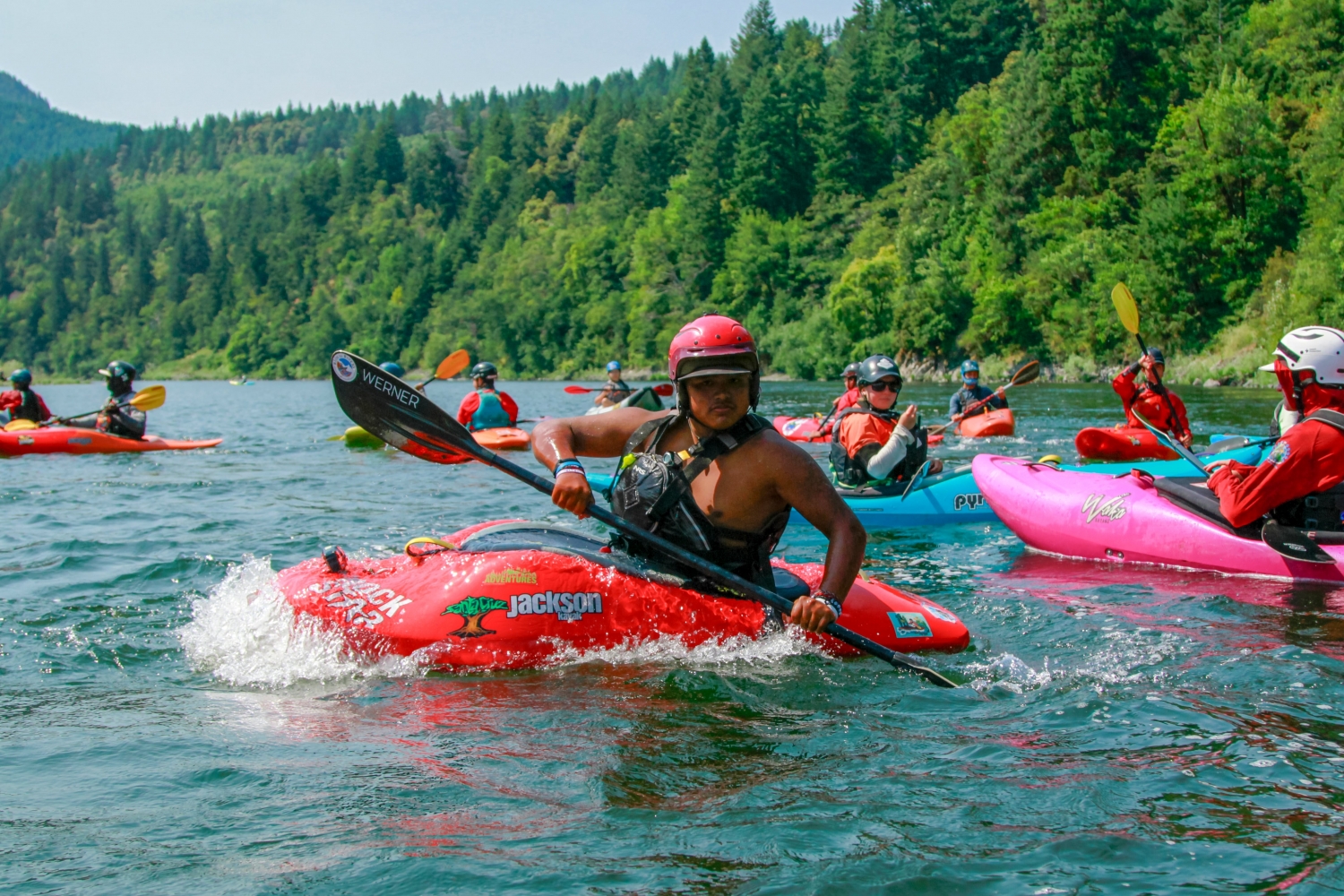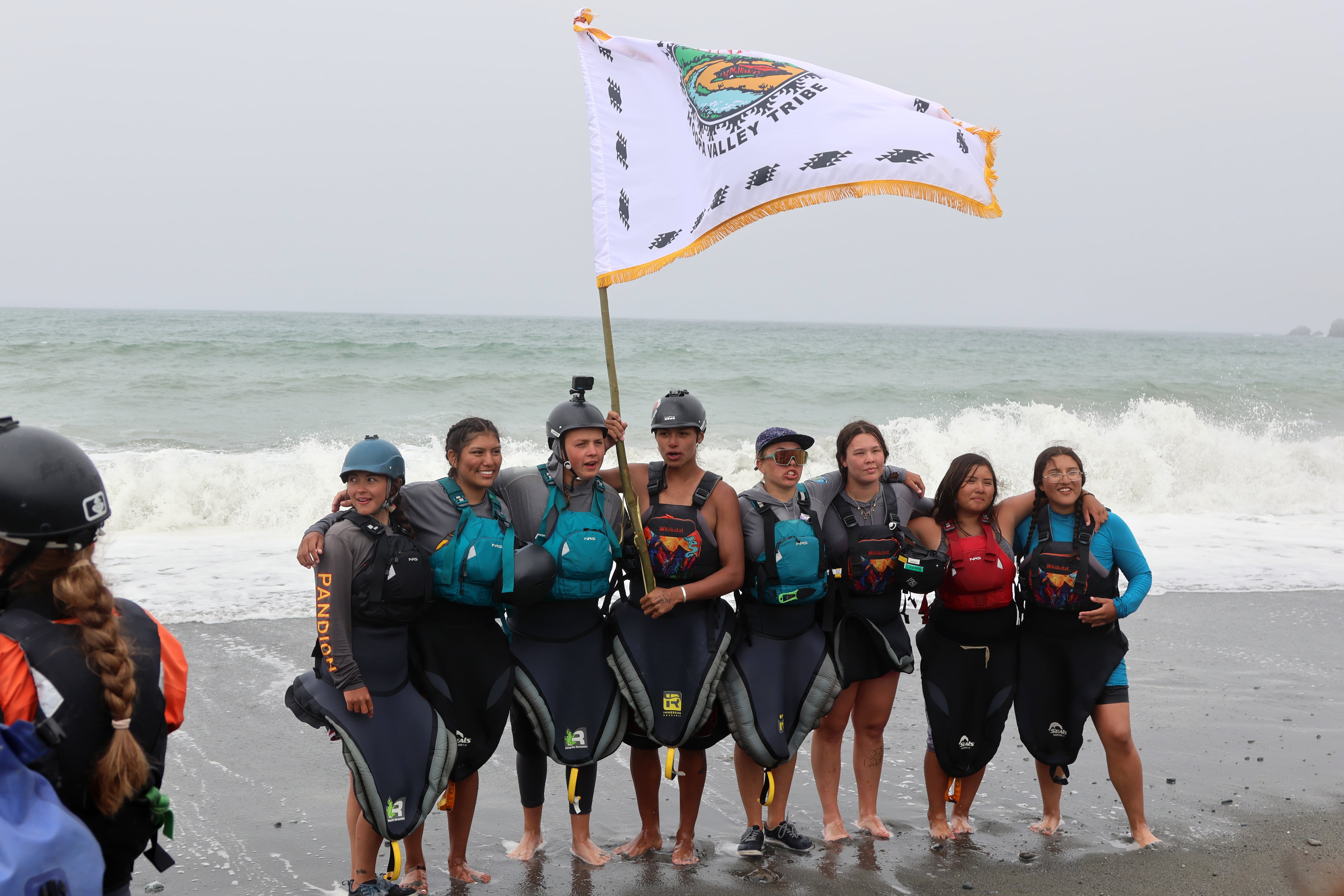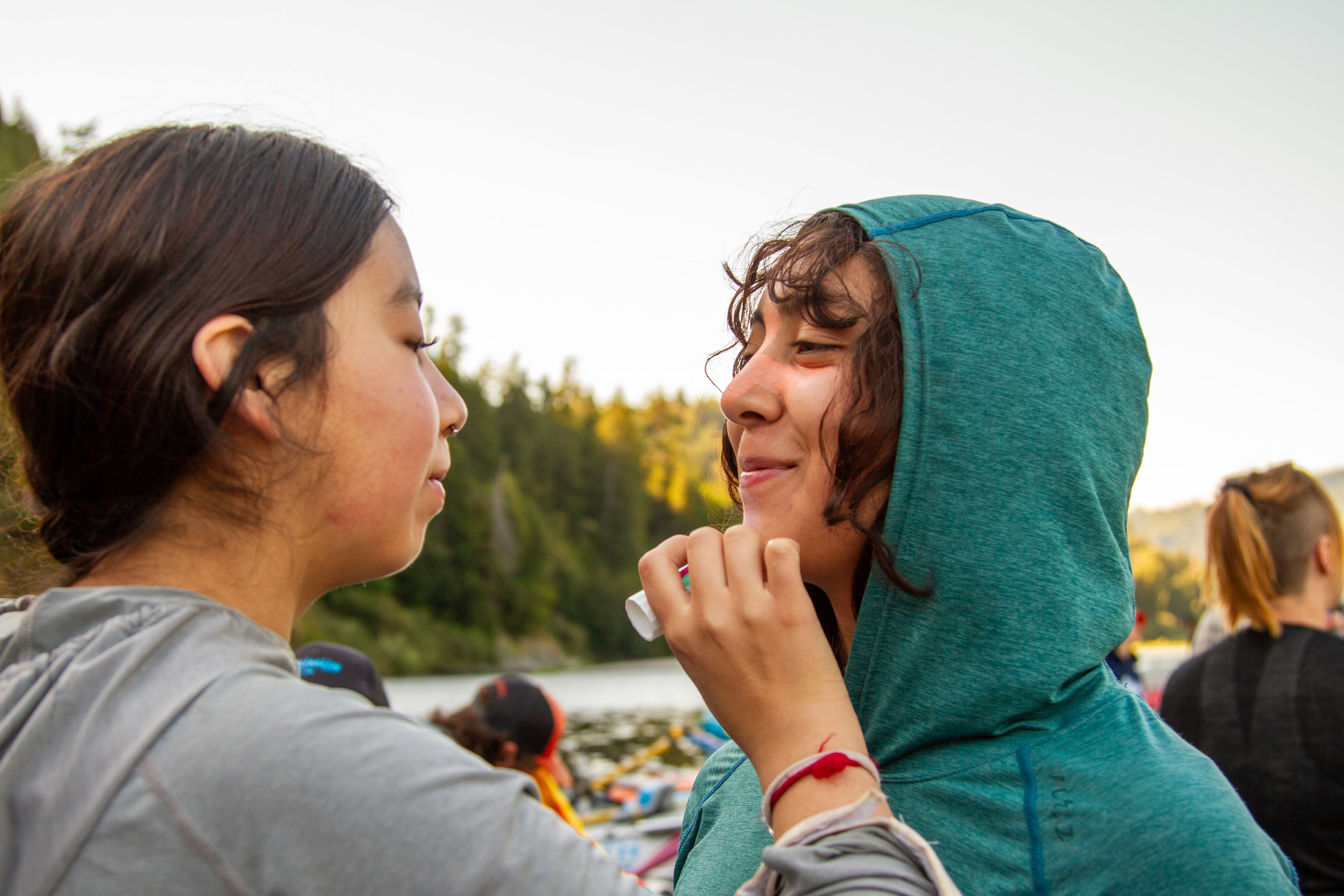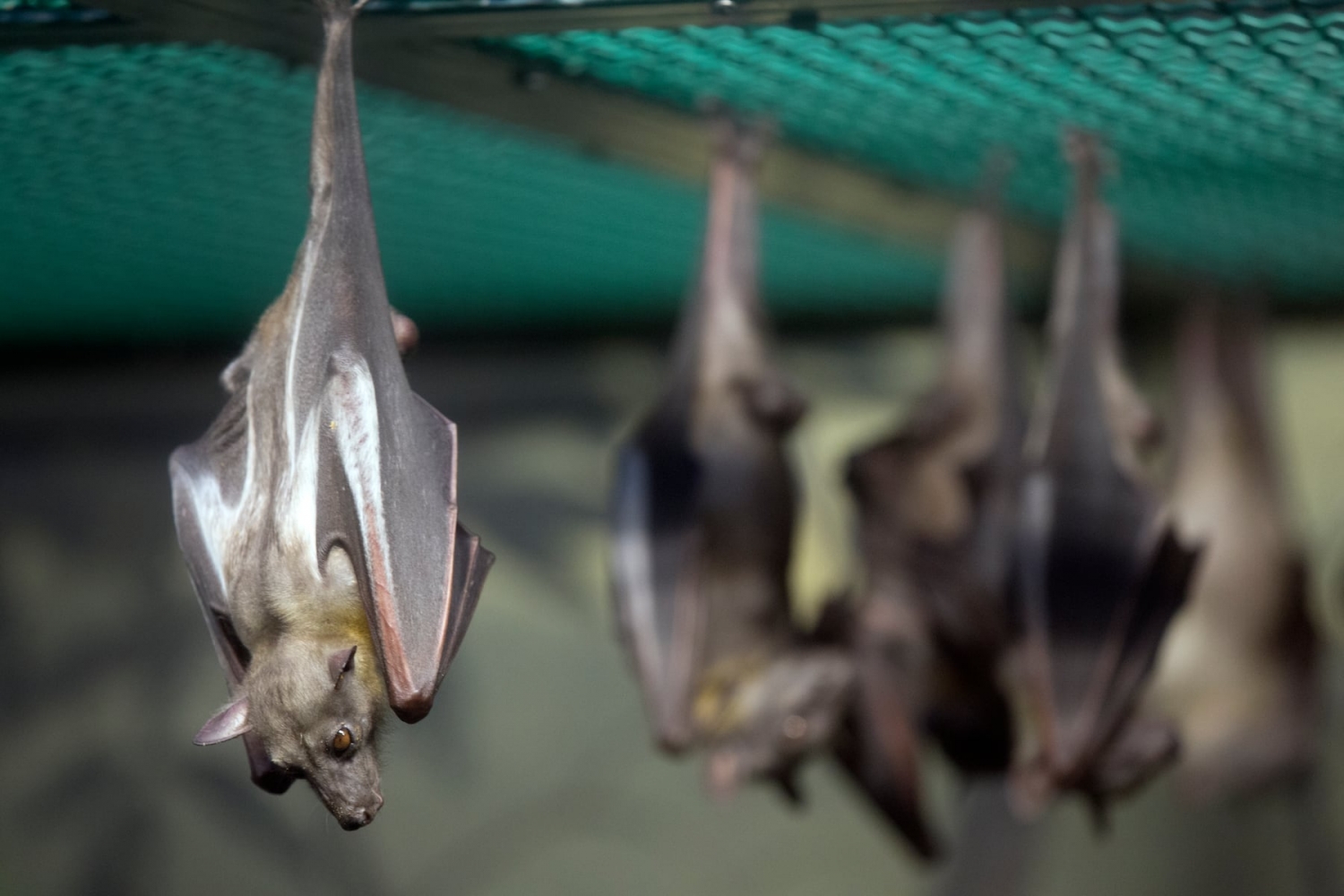

Published on: 08/04/2025
This news was posted by Oregon Today News
Description
This story originally appeared on Underscore Native News.

In her home country of Chile, 15-year-old Ianka Purran has a front-row seat to the deterioration of her home river, the Biobío, which is suffering from the impacts of dams.
When Purran, Mapuche Pewenche, heard about a historic descent being planned for the newly free-flowing Klamath River in the United States, she jumped at the opportunity to join the journey, with the hopes of returning home with knowledge and tools for her own community to one day use in resuscitating the Biobío, the second largest river in Chile.
“Seeing the work that these people have done for more than 100 years to get the dams removed has been really inspiring,” Purran said via translator during the recent 310-mile descent of the Klamath that she completed along with 120 other kayakers, including Indigenous youth from around the world.
Listening to the Klamath people speak to the different groups from different parts of the world about their fight and ultimate triumph to free the Klamath River was “powerful,” said Carly Lloyd, translator for Kayakimün, the kayaking school initiative that brought Purran and others from Chile and Bolivia to witness and participate in the descent.
“To share that they can do it, too, even though they are still having dams being built, or these proposals to fight — it’s possible,” Lloyd said. “It feels really, really powerful to bring these people to the dam removal sites and show them what it looks like to take out a dam.”

The historic first descent was organized by Paddle Tribal Waters, a program under the nonprofit Ríos to Rivers, and was years in the making, including the participating youth traveling to rivers around the world, from South America to Africa, where they learned not only the whitewater skills needed for the Klamath descent, rooted in an Indigenous-based curriculum, but also firsthand the similar ways that colonization’s impacts on river systems echo across the globe.
After completing the month-long Klamath journey in early July, Indigenous youth, tribal leaders and global allies from river basins in Chile, Bolivia, New Zealand, China and the U.S. gathered for the Global Free Rivers Symposium and signed the inaugural Klamath River Accord, demanding the removal of existing dams and an end to the building of new ones worldwide.
In a room at The Historic Requa Inn that overlooks the Klamath River, one by one, they etched their names into history. Through the window, a view of the mouth of the Klamath River stretched out below, where the river meets the ocean, free and unobstructed, at last.
Addressing global problems by returning home
Danielle Frank, 21, Hoopa tribal member and Yurok descendant, played a lead role in organizing the first descent of the newly free-flowing Klamath River, which had been blocked by dams for over a century. Frank, who serves as the Director of Development and Community Relations for Ríos to Rivers and sits on the nonprofit’s board of directors, helped bring together over 120 people from four continents to celebrate the liberation of the river and to strategize for a dam-free future — all while paddling down her community’s lifeline, the Klamath River, in the wake of the largest dam removal and river restoration project in history.
“My family is what turned me into the person that I am,” Frank told Underscore Native News.

Frank’s traditional Hoopa name means “Abalone Eyes,” because she was born with bright green eyes, the color of the abalone shell. But she says that everyone back home just calls her “Ducky,” because she loved the water so much as a little girl.
Growing up on the Hoopa Valley Reservation, the largest reservation in California, Frank was raised by strong Indigenous activists like her father. Her family instilled in her a deep commitment to fighting for clean water and healthy river systems. She attended her first protest at 7 years old with her father. By 10, she was speaking to crowds at dam removal protests in Salem, Oregon. In middle school, she rallied her friends to get permission slips so they could travel to Sacramento, California to provide public comment on water issues. Frank later founded the Hoopa Valley High School Water Protectors Club.
At 17, after high school graduation, Frank moved to Sacramento, where she attended college and continued her work in public policy.
“There was this stigma that you had to leave to figure out how to do something good,” Frank said. “I kind of believed that at the time, because I didn’t know if I could do anything good here, which is crazy, because there was so much good around me. But I thought that existed everywhere in the world.”
Frank continued to advocate for the water, fish and river people back home while in Sacramento, making the 10-hour roundtrip drive back to the Hoopa Valley Reservation as often as possible. In the summer of 2022, a few community members approached her about an idea to get Indigenous youth out on the water, which turned into Paddle Tribal Waters, a two-and-a-half-week kayak and river advocacy training program for 15 Indigenous youth from the Klamath Basin.
Those few weeks with the first Paddle Tribal Waters cohort inspired Frank to return home. She called her grandparents and told them that she didn’t think she belonged in the city anymore. She hasn’t looked back since.
“Paddle Tribal Waters brought me back home,” Frank said.
“When I met Paddle Tribal Waters,” she continued, “I wasn’t exactly sure what my role in the community was going to be, and then it quickly showed me exactly what I was supposed to be doing.”

In January of last year, the first two cohorts came together for a semester-long kayak training and academic program, developed in partnership with World Class Kayak Academy. The intensive program played a crucial role in equipping students with the skills needed to take part in the Klamath descent. Frank emphasized the importance of reconnecting Indigenous communities with the river and healing generational trauma through cultural and environmental restoration efforts.
“Getting kids connected to their rivers and being able to be in relationship with the river and the river’s people, especially the young people, was exactly what I was supposed to do with my life. And that’s what Paddle Tribal Waters taught me,” Frank said. “This has been my whole life for years now, and completing it feels insane. It feels like I really got to give back to my community who has done nothing but pour into me since before the day that I was born.”
‘The answer to my ancestors’ prayers’
While preparing to embark on the final stretch of the 310-mile-long Klamath journey, Kimora VanPelt, a 20-year-old Hoopa Valley citizen, said words couldn’t describe the significance of the moment, especially for the elders.
“We get to have our culture back, our food back, and we don’t have to worry about that as much anymore,” she said.
“This moment, this right here, is something our people have been waiting for,” said 15-year old Tasia Linwood. “This moment has been prayed for — it’s amazing to be a part of that.”

Linwood, enrolled Karuk and Okanagan, Ojibwe, and a Wampanoag descendant, was among the dozens of Indigenous youth from Klamath River Basin tribes who realized their ancestors’ prayers by descending the free-flowing Klamath River from source to sea. Youth ranging in ages from 13 to 20 represented the Klamath, Yurok, Karuk, Quartz Valley, Hoopa Valley, Warm Springs, and Tohono O’odham Nations.
“It feels great for me to be able to be the answer to my ancestors’ prayers,” said 16-year-old Hoopa tribal citizen Julian To:-Nikya:w Rogers during an interview on the second to last day of the month-long journey.
“I’ve had a lot of time to myself just thinking,” Rogers said. “I’ve been on this flat water, and I’ve just been alone with my thoughts, and I’ve been in places where I’ve touched rocks that maybe nobody has touched in hundreds of years. I’ve been thinking of my ancestors. I’ve had a lot of family members that have been fighting for these dams, and they aren’t here today, but I’m proud and I’m thankful that they were there and they were fighting for [dam removal]. So for me, I’m super proud to say that I’ve done it. I’m super thankful for them — the people before me.”

Salmon returning to headwaters
For the past three years, youth have had the opportunity to train and learn how to navigate whitewater with kayak instructors from Paddle Tribal Waters. Many students didn’t know what a hardshell kayak was prior to joining the program. They also traveled to different communities and rivers around the world, in addition to learning an Indigenous-based curriculum.
Rogers, his 18-year-old brother ‘A:de’ts-Nikya:w Rogers and their 15-year-old cousin To’nehwa’n Jayden Dauz, all Hoopa Valley citizens, were the only three youth kayakers cleared to complete every section of the 310-mile river descent. In addition, they also kayaked a section of the Trinity River, one of the main tributaries of the Klamath River.
“I didn’t think hard shell kayaking was gonna get me this far in life and give me this many opportunities,” Dauz said.

The World Class Kayak Academy, which organized the international training in far-flung places like Africa, offers high school students the opportunity to continue their education while traveling the globe, paddling iconic rivers and immersing themselves in diverse cultures.
Dauz and Ruby Williams participated in two separate 13-week programs in Africa and Canada this past fall. Even though they were thousands of miles and oceans away from everyone and everything they had ever known, they were that little slice of home for each other through it all.

“Me and Ruby have been kayaking together for two years now, and I’ve kayaked with her the most out of anybody here,” Dauz said. “I love hanging out with [her], because we’re so connected and we know each other.”
Williams, Quartz Valley citizen and Karuk person, celebrated her 18th birthday on the second day of the month-long descent.
“June 13. I’ll remember it forever,” Williams said with an exhausted chuckle. “Now that was the hardest birthday. We just paddled for a whole day straight, 20 miles.”
Williams grew up hearing that the Klamath River was “disgusting” and that she should never swim in it. But now, after completing the descent down the river, she has seen firsthand how much has changed since the last dam was removed.
She recalled the stories her grandfather used to tell — about what the river once looked like, how the salmon runs were abundant, and how beautiful it all used to be before she was born. Then she remembered growing up and seeing how sick the river had become.
But since the dams have been removed, what was once a river choked with toxic algae is now returning to its original “steelhead green” color, Williams said.
“It looks beautiful,” Williams added. “It looks like it always should have been — and how it needs to be.”

A few months ago, while scouting the route, Williams and Dauz were surprised to see juvenile salmon swimming alongside them, already making their way back to the headwaters.
“I saw salmon above where Iron Gate Dam used to be, and they’re not loading them into trucks. I saw that guy swim all the way up,” Williams said. “He knew his way after all these years.”
‘The work is far from done’
Kayaking through the stretch of river where the Iron Gate Dam once stood was emotional for Frank.
“I wish my dad could see this,” Frank said. “My dad was a very important person to me my whole life. He passed away in 2021 when things were a final ‘yes’ for the dam removal.”
Frank remembers sitting with her father and sharing the news that the dams were going to come down. But he never got to see it.
“That’s kind of what I was thinking about coming through Iron Gate, not just my dad, but all the people who fought for dam removal, who were not there physically to be part of this monumental moment,” Frank said. “And so it made me just very grateful that I’m alive to see this.”

Frank at first felt a hole with the absence of all those who came before, who fought for this moment.
“Then I turned around and I saw the kids, and I was like, ‘Oh, the hole’s filled. There’s good people who are seeing this. There’s a reason the water waited for this moment, and it’s because of these guys,’” she said. “And so it was a really emotional moment for me, and I felt very grateful to be part of this family that gets to help heal our river and part of this community.”
There will always be water wars if society continues to be guided by a colonialistic and capitalistic mindset, Frank said. But the descent was an opportunity for the youth of the Klamath Basin and beyond to talk to the river, talk to the people and talk to the world — to remind them that rivers are central to their being.
“Dreams come true and hard things happen,” Frank said. “We brought all these other Indigenous people out here to dream with us about what our future looks like because the dams are out.”
“The work is far from done,” she added. “Actually, it just started, and we have decades of restoration to be done.”
Underscore Native News is a nonprofit investigative newsroom committed to Indigenous-centered reporting in the Pacific Northwest. We are supported by foundations and donor contributions. Follow Underscore on Facebook, X, Instagramand TikTok.
This republished story is part of OPB’s broader effort to ensure that everyone in our region has access to quality journalism that informs, entertains and enriches their lives. To learn more, visit opb.org/partnerships.
News Source : https://www.opb.org/article/2025/08/05/klamath-river-tribes-first-descent-free-flowing-waters-dams-removed/
Other Related News
08/04/2025
Roy Cabal was on the beach Sunday in Pacific City when a co-worker alerted him to an unusu...
08/04/2025
8225 - LCSO Case 25-3638 Deputies locate kidnap victim arrest suspect near Veneta On A...
08/04/2025
8125 - LCSO Cases 25-3628 25-3629 Veneta woman arrested after attempting to set house on ...
08/04/2025
A report was issued from the National Weather Service on Monday at 458 pm for strong thund...
08/04/2025








